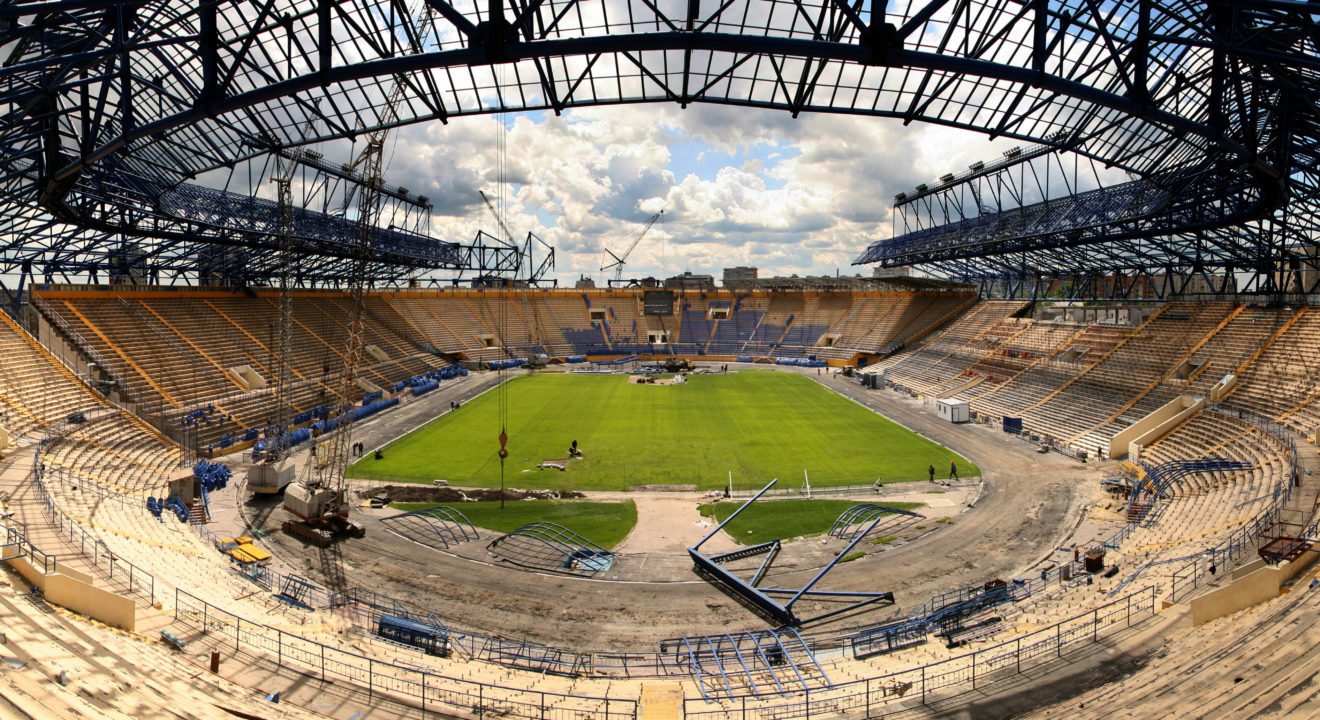Entertainment August 25, 2016


Every Olympics season features boisterous fans filling up the bleachers to cheer on inspirational athletes, focused swimmers crouching tensely on diving boards and sprinters racing their hearts out as they compete for the coveted gold metal. In the heat of these events, we sit behind our television screens anxiously watching the entertainment and throwing up our hands in glee after our favored teams win. All of these moments, which are shared worldwide, are what makes the Olympics the most popular sporting event every two years.
But have you ever thought about what happens to the venues when the Olympic Games are over? What happens to those grand stadiums that hosted thousands of spectators, the pools in which Michael Phelps swam, the tracks on which Allyson Felix ran? We assume that they’re preserved as athlete training centers, converted into gyms or even designed into apartments remodels.
Unfortunately, that’s not always the case. According to Today News, the summer 2004 Olympics in Athens is often cited as one of the biggest “post-Olympic venue failures.” It came with a hefty price tag of $15 billion USD, which gave no return on investment or economic growth. It plunged Greece into a deep recession, angering its citizens, who chided the government for its “lack of foresight.” Almost a decade later, these 2004 venues are either abandoned, unused, defaced or wrapped in chain-link fences.
Russia is learning from this potential economic disaster by reusing its facilities from the 2014 Sochi Winter Olympics – the most expensive Olympics in history – to be used for 2018 World Cup. The Bolshoy Ice Dome and the 40,000-seat Fisht Stadium that wowed viewers worldwide in 2014 will now be used as a tournament stadium and training site. The Alpine village of Rosa Khutor, which hosted the Olympic skiing events, is now a ski resort destination.
Even when the host country is economical and has the financial means to milk the most use out of Olympic venues, the Games don’t usually see a great return in investment. As history has shown in Athens, Barcelona and Beijing, most stadiums and venues are vacated and fenced off the minute the Games conclude. Stadiums can become decayed skeletons of a memorable competition, the water in the pools are either drained or left to sour and the tracks are abandoned. Ornate venues transform into run-down ghost towns, the embarrassing outcome of billions of dollars poured into a three week sporting event.
In this respect, controversy was sparked over the games in Rio, especially since the country suffered an economic downturn in the years since they were chosen to host the Olympics. New infrastructure had to be created, stadiums constructed and high expenses delegated, including an elegant private cruise ship called “Silver Cloud” for professional basketball players so they didn’t have to live in the Olympic village with the rest of the athletes.
After the conclusion of every Olympic event, these venues are consistently abandoned after colossal funds are invested into their construction. Shelling exorbitant amounts of money will have a different impact on the country, depending on their economic state. More fragile economics like Brazil or Greece will face a harder blow to their stability than wealthier nations like the UK or the United States.
Before these buildings become nothing but decayed shells, there should be a plan for how they can be re-purposed post-Olympics. These venues can still have a valuable function – whether as a continuation of athletic events, a museum or even a shelter for the homeless. This way, years of financial investment is not left gathering dust.